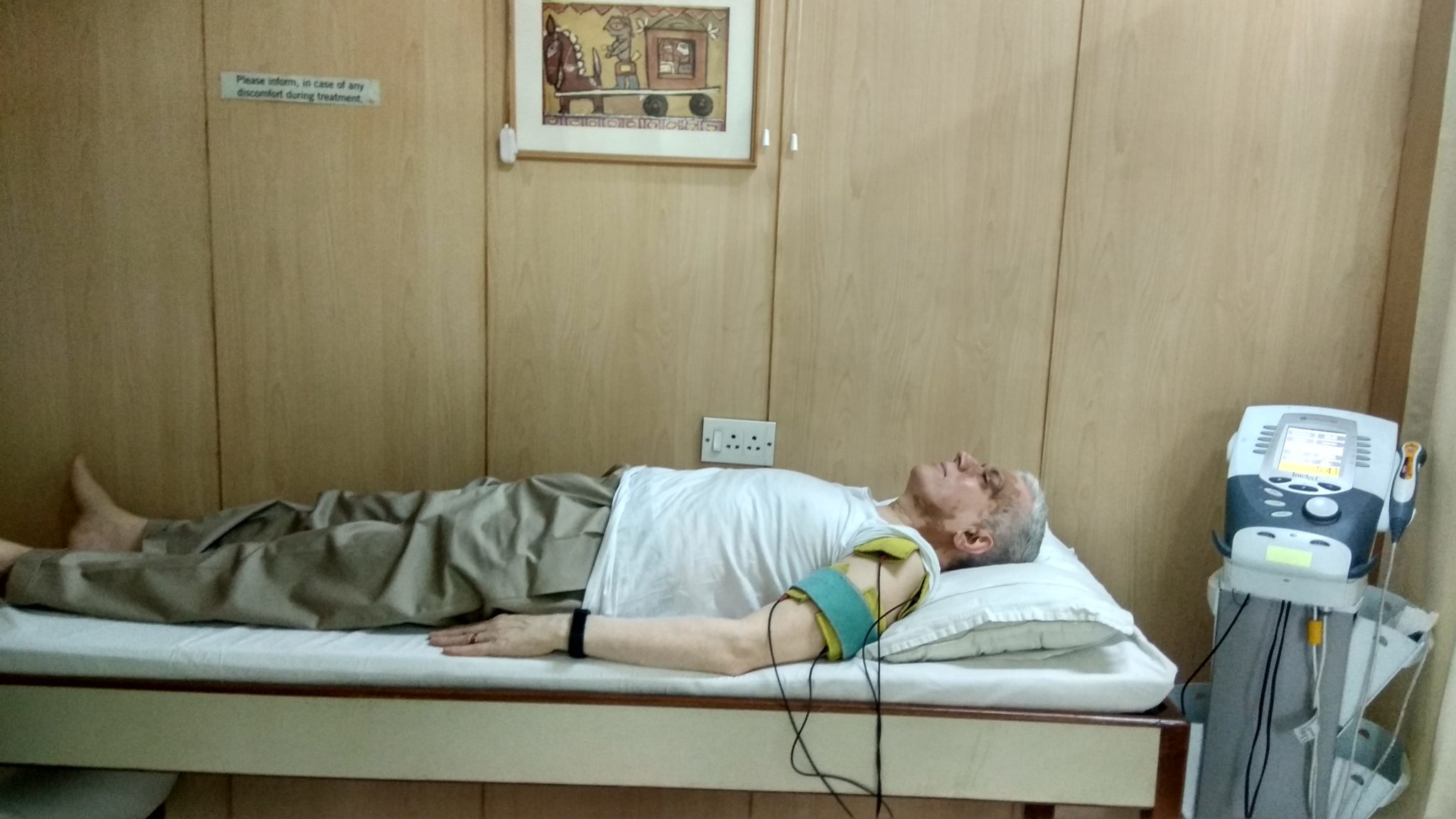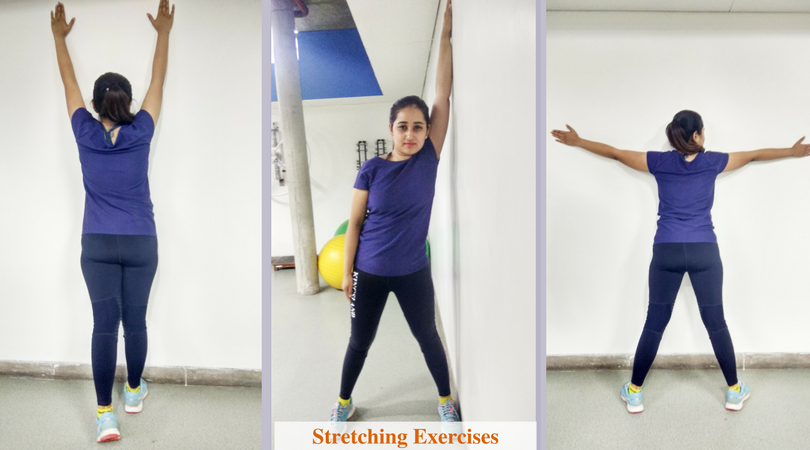Frozen shoulder or adhesive capsulitis is a condition which severely restricts shoulder movements and makes them painful. It usually happens in people with diabetes or those with injuries to the shoulder muscle (rotator cuff tear). It is also more commonly seen in women, and in people above 40.
“In most cases, a frozen shoulder can be treated with painkillers, physiotherapy and exercises” assures Dr. Vikas J. Seth, Senior Consultant, Orthopedics.
Treatment of Frozen Shoulder
Physiotherapy treatments are customized according to your condition and needs.
Dr Aman Sachdeva, Consultant, Physiotherapy at Sitaram Bhartia Hospital, says “Through physiotherapy, we ensure relief and rehabilitation of the shoulder.”
Physiotherapy treatment for frozen shoulder includes shoulder mobilization, electrotherapy modalities and stretching exercises.
1. Shoulder Mobilization for Frozen Shoulder
Shoulder mobilization is a physiotherapy technique performed by highly skilled and certified manual therapists. Thorough examinations and assessment of the shoulder are done before employing any therapy technique.
There are two popular manual therapy techniques which are usually applied for pain annihilation or improvement in your range of motion.
One technique is known as Maitland mobilization, which is a common manual therapy used to treat various joint disorders. The purpose of this therapy i.e., whether it is employed for pain annihilation or for stretching makes a difference on the extent of movement and force applied by your therapist.
The second mobilization technique is Movement With Mobilization (MWM). This technique helps improve your shoulder’s range of motion. Sustained application of gliding force is applied to your shoulder joint. You can perform this by yourself or it can be passively, performed by your therapist.
Shoulder mobilization along with range of motion exercises (ROM) and stretching is by far the most effective treatment option available for frozen shoulder at present.
2. Electrotherapy Modalities
For immediate pain relief, there are electrotherapy modalities like laser therapy, Transcutaneous Electrical Nerve Stimulation (TENS) and Interferential therapy (IFT). These employ light electrical stimulation to the muscles and bring relief to the patients.

Above image: The Transcutaneous Electrical Nerve Stimulation (TENS) being used on a patient
Although shoulder mobilization and electrotherapy require you to seek treatment from the experts, there are certain exercises you can do yourself to heal your frozen shoulder.
3. Stretching Exercises for Frozen Shoulder
During the initial painful stage of frozen shoulder, simple and pain-free stretching exercises are advised to be done at home. Improving the range of motion (ROM) of your shoulder is the key action during the first stage as that’s when signs of stiffness start to appear.
As the treatment progresses, the duration, frequency and intensity of the stretching program increases.
Here are 3 stretching exercises that you can easily do at home –

Understanding Options for Treatment of Frozen Shoulder
Along with physiotherapy, knowledge about your own condition helps reduce frustration and encourages you to comply with treatment. The right education and home care exercise program suggested by your physiotherapist plays a critical role in your improvement.
Proper knowledge about your condition and the treatment options available makes a big difference in how you approach your ailment. The rate of improvement and recovery depends on various factors like the stage of frozen shoulder, regularity with physiotherapy sessions and exercises at home.
You have to be regular with your physiotherapy sessions and home care program to expect a smooth recovery. Usually, it takes 7-10 days to notice improvement in your shoulder after the sessions begin. Your shoulder will feel lighter and pain-free as the treatment progresses and full recovery will take about 4-6 weeks at the very least.
“Physiotherapy is usually the first choice of treatment for a frozen shoulder, while injections may be advised in a certain number of cases. If the problem persists despite treatment, we may recommend surgery,” says Dr. Vikas.
Surgery for Frozen Shoulder
If you experience recurring pain or limited benefits from prolonged physiotherapy, you could look into minimally-invasive surgeries (MIS) for treatment of frozen shoulder. If you have been avoiding treatment after failed physiotherapy or because of fear of surgery, you shouldn’t suffer in pain anymore and instead, take advantage of the medical advancements.
During the surgery, the tight structure causing frozen shoulder are released. In case of associated tear in the shoulder muscle (rotator cuff tear), it is surgically repaired.
The advantage of arthroscopy is faster rehabilitation, very small cuts and minimal pain. After surgery, you can get back to normal activities between 4-6 weeks post-rehabilitation and physiotherapy. Within 3 months of the surgery, you can even resume sports activities.
Hear from Rama Khanna who had initially been advised injections for her frozen shoulder. She visited us for a second opinion, she was healed within 6 weeks without surgery!
Don’t ignore a stiff shoulder especially if it is preventing you from carrying out daily activities such as combing your hair or cleaning your back. A step towards treatment is a step forward!
Do you have any questions about frozen shoulder? Please call us on +918800816657 to schedule a consultation with our doctor.


